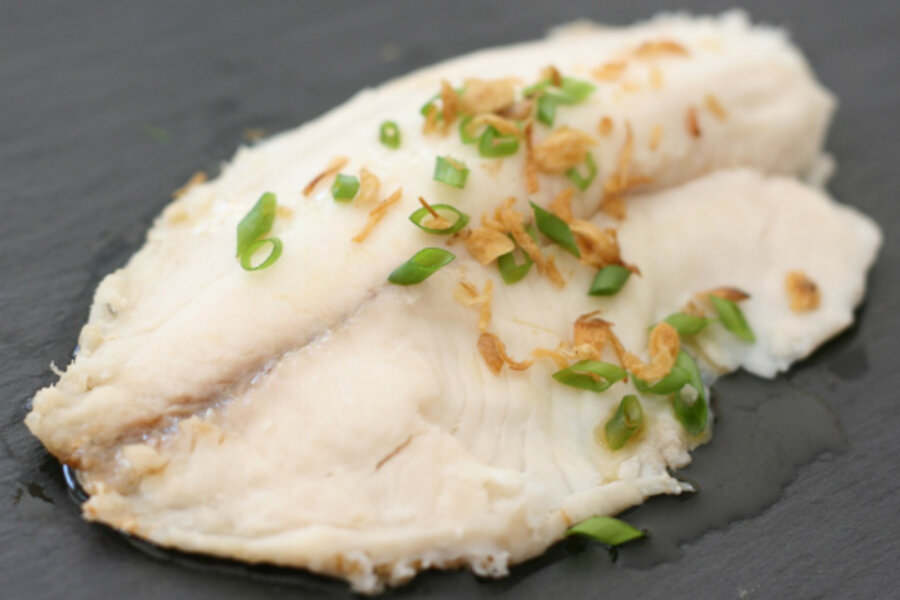Microwaved lemongrass steamed fish
In the week leading up to Earth Day on April 22, my son has been learning how to be kind to Mother Earth. His teachers talked about the nuts and bolts of recycling, they picked up trash from the school grounds, and they potted flowers to bring home and plant in the garden. I’m tickled that my 5-year-old is becoming a mini Green activist!
At home, I’ve also been trying to teach my son another important way to reduce our carbon footprint – by cutting down on food waste that lands up in landfills.
When I was growing up, my mom always insisted that no food go to waste in our house. Leftovers were magically transformed into breakfast or lunch the next day, bread ends were sunned and turned into croutons and bread crumbs, and vegetable scraps were thrown into the compost pile to enrich my dad’s garden.
As much as I hate to admit it, I am my mother’s daughter, especially when it comes to reducing food waste. And I’d love to share some tips:
- Plan a weekly menu, make a shopping list and stick to it.
- Learn about proper food storage techniques so your food won’t go bad before you can use them.
- Learn to cook intuitively. If you can cook beyond the confines of a recipe, you’ll get the most from your food, wasting little and repurposing leftovers in creative ways.
- Use the edible parts of vegetables you normally wouldn’t eat. For example, vegetable skins – from example zucchini and carrots – can be turned into vegetable tempura fritters. Vegetable stems and skins can also be added to stocks for flavor.
- Buy bone-in meats and save the bones and scraps, as well as shrimp shells and fish heads and bones to make stock. Plop an entire chicken or turkey carcass into a pot with rice for congee.
- Leftover meat and vegetables are perfect for stir-fries, soups, and many other dishes.
Asians are experts at reducing food waste, don’t you think? We’ve been practicing nose-to-tail cooking for centuries, utilizing every part of the animal. In addition, very little of the vegetables and fruit we eat goes to waste either. Cilantro roots are used in curries, pineapple cores are tossed into soup, and in my opinion, all produce can be pickled!
I can think of several Asian dishes that seem to have been solely invented to use up leftovers. Fried rice is one such leftover makeover dish. Ditto Indonesian mie goreng and bi-bim-bap. Then there’s chicken tinola, a Filipino soup that is traditionally made with “rice wash,” the water saved from rinsing rice. And last but not least, a lovely Thai lemongrass–steamed fish my friend Pranee taught me.
Microwaved Lemongrass Steamed Fish
1 (6 ounce) 1/2-inch thick fillet firm white fish such as tilapia, halibut, or true cod (bonus points for using a sustainable fish!)
Leftover lemongrass leaves from 2 to 3 stalks
1/2 teaspoon fine sea salt, or to taste
1/2 cup water or more as needed
Chopped green onions (optional)
Fried shallots (optional)
1. Take a lemongrass trimming and rub it all over the fish fillet. Discard. Gently rub salt into the fish.
2. Cut the lemongrass trimmings to size and lay them in a grid-like pattern on the bottom of a rimmed microwave-safe dish (a pie plate works well). Place the fish fillets on top of the lattice. Add enough water to reach the bottom layer of lemongrass without touching the fish.
3. Wrap tightly with good plastic wrap, ensuring that it doesn’t touch the fish and microwave on high for about 2 minutes. Check at 1 minute 30 seconds and keep microwaving in 30 second increments until the flesh is opaque and flakes easily with a fork. Remember, it’s crucial not to overcook the fish! (In my 1000-watt microwave, it took 2 minutes).
4. Using two spatulas, carefully transfer the fish onto a serving plate. Spoon the liquid over the fish and sprinkle with green onions and fried shallots before serving immediately.
Note: You can easily double the recipe by following the exact same directions above and placing two fish fillets alongside each other. You may have to adjust the cooking time.Related post on Pickles and Tea: Ingredient spotlight: Lemongrass







